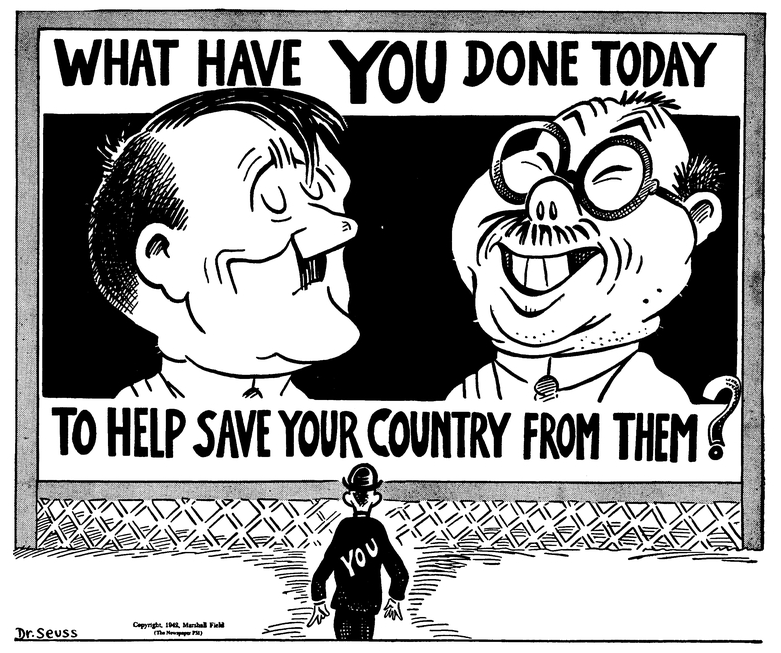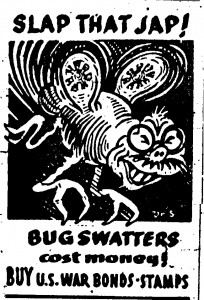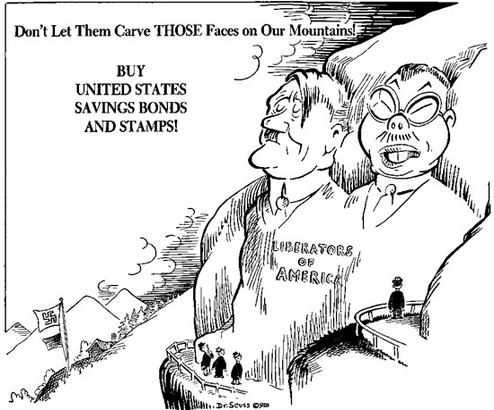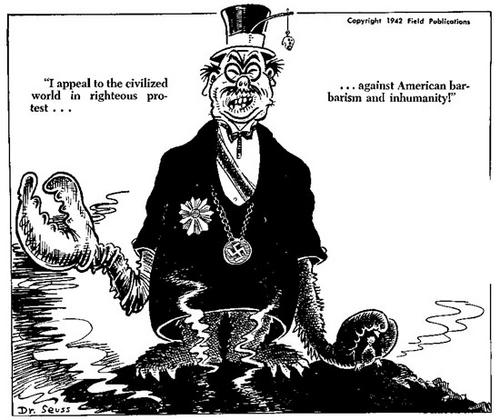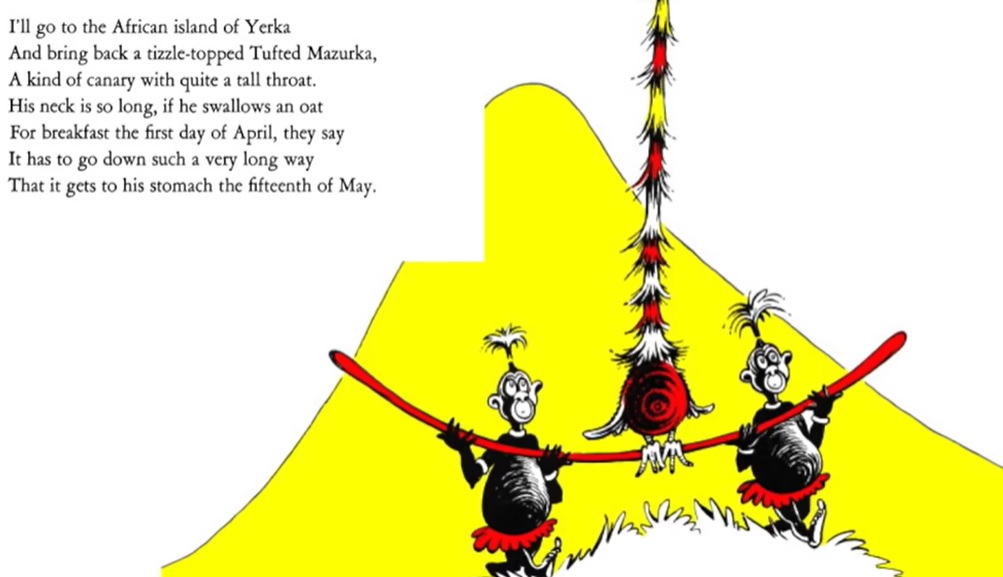
A public reckoning with the racist imagery in much of Dr. Seuss’ work has actually been a long time coming. I’ll forgive you if you didn’t read my 2015 post on the topic.
In that piece I focused on the World War II propaganda cartoons he drew in support of the US war effort, and the dehumanized imagery he produced to depict our Japanese foes compared to his much more sympathetic portrayal of, namely, Adolf Hitler.
Those images were completely in line with the race thinking that serves as a foundational element of American foreign policy ideology, how we understood the world and our place and role in it. Anglo-Saxonism is its core, placing America and Britain as a single people standing atop a racial hierarchy in which Germany was a racial close cousin, separated from us only because it had “lost its love of liberty.” Asians fell far down the ladder at whose absolute bottom stood Blacks. As I wrote six years ago:
The wartime cartoons of Dr. Seuss put these [issues] on vivid display. In the images reproduced here, Hitler is portrayed as essentially an aristocrat, his head held high in a posture of contempt of others, almost attractive and noble for all his arrogance. Not so the Japanese, shown here leering with a slant-eyed squint through thick glasses, with buck-toothed grins. Or as inhuman monsters and insects with caricatures for faces.
The point I was making then, and which I want to reiterate now, is that Dr. Seuss was no outlier in the way that he thought about race compared to other Americans. The racism visible in his work was part and parcel with the systemic racism of his times which we still struggle to acknowledge and overcome.
What has changed is our willingness to continue to overlook it.
Dr. Seuss Enterprises, the foundation that oversees the artist’s legacy and publishes his works, announced yesterday that it will no longer publish six of his books, most notably And to Think That I Saw it on Mulberry Street, and If I Ran the Zoo, from which the image at the top of this post is taken. Mulberry Street holds a special place in my heart. It was the first Seuss book I remember reading (or more likely remember being read to me). And I’ll acknowledge not being aware that, in the words of the announcement, “These books portray people in ways that are hurtful and wrong.”
But I can’t say that I’m surprised, and I can’t say that they’re wrong. While conservative culture warriors may race to the airwaves and Twitter to decry the decision as cancel culture run amok, reality isn’t so simple. Nor is Seuss’ legacy.
Because Seuss was on the right side of history on many of the issues of his day. He drew cartoons decrying Jim Crow laws and defending Black rights to equal employment. He drew cartoons lambasting Nazi policies and attacking the isolationism and anti-Semitism of Charles Lindbergh’s America First Movement.
And he drew a lot of things that were and are shockingly racist. We should be mature enough to acknowledge that even as we embrace the lessons of environmentalism in The Lorax and tolerance and acceptance in Horton Hears a Who!
Seuss’ liberalism, and his racism, are his legacy. And they’re our legacy too.
